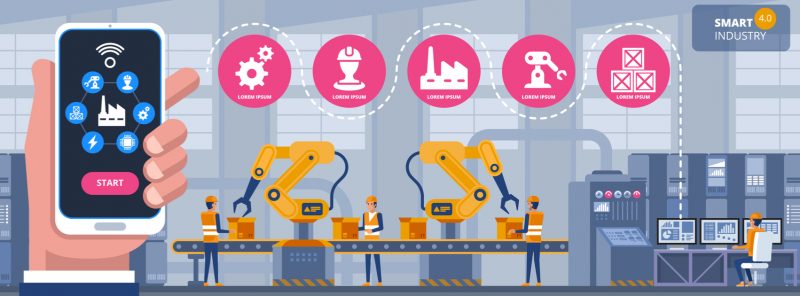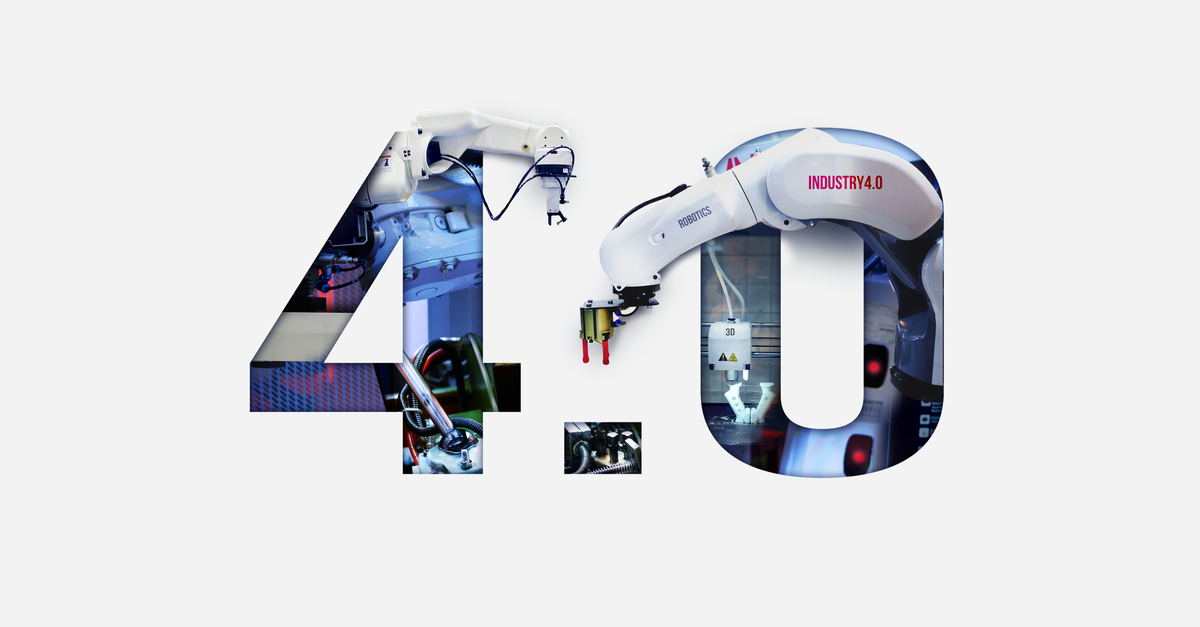Estimated reading time: 2 minutes
No longer just a buzzword, the fourth Industrial Revolution or Industry 4.0 is taking over a chunk of the Digital Transformation. Companies are revolutionizing their manufacturing process, by getting smarter in that aspect. We have AI, Automation, Robotics, Medical Technical Advances, Smart Buildings/Cities and IoT to thank for this next step in the Industrial generation.
 The new age of Manufacturing is among us. Participants are getting smart and boosting their capabilities with Smart Manufacturing, Smart Factories, and IIoT.
The new age of Manufacturing is among us. Participants are getting smart and boosting their capabilities with Smart Manufacturing, Smart Factories, and IIoT.
The adoption of new technology devices is happening so frequently, that it’s almost difficult to keep up with new advances.
| Smart Factories: AI and IoT are strategically set up to improve the production process through visibility, connectivity, autonomy… all without the help of human workers. |
| Smart Manufacturing: One can’t have a smart factory without smart manufacturing; for it’s the foundation of it all. SM employs machines to be connected across multiple systems, and it can be accessorized by IoT sensors. These sensors will track production progress in real-time. Therefore, issues can be addressed at same day speed and handled accordingly. |
| Industrial Internet of Things (IIoT): This works by using IoT to improve manufacturing processes, but also blending in Machine Learning, Cloud-based data and sensors. IIoT can collect and analyze data to help managers make better decisions. With IIoT, there is a boost in capital investments, through asset management techniques, such as predictive maintenance. |
AI Again & Again
 AI is perhaps the largest buzzword in the industry right now, especially within Industry 4.0! It brings massive change to IoT, when human behavior in production environments grows at an advanced scale, thanks to AI. As a machine becomes more intelligent and capable of learning, it is able to perform more more tasks than previously possible. Machines will never replace human employees, but some low-level jobs may become redundant. Though this may seem like a negative feature, these smart machines are clearing up space for higher efficiency and performance levels. Machines can work quicker and with fewer errors.
AI is perhaps the largest buzzword in the industry right now, especially within Industry 4.0! It brings massive change to IoT, when human behavior in production environments grows at an advanced scale, thanks to AI. As a machine becomes more intelligent and capable of learning, it is able to perform more more tasks than previously possible. Machines will never replace human employees, but some low-level jobs may become redundant. Though this may seem like a negative feature, these smart machines are clearing up space for higher efficiency and performance levels. Machines can work quicker and with fewer errors.
Trends & Their Pathway
 Industry 4.0 is imminent. Taking the most proactive steps to open up one’s current business plan, can make way for advanced technologies to come. Edge computing and Augmented Reality technologies will utilize IoT sensors to give engineers and managers the visual walkthroughs of issues occurring throughout the floor. Automation, Deep & Machine Learning and few others can assist with improving performance of CoBots (Collaborative Robots) in coordination with human workers.
Industry 4.0 is imminent. Taking the most proactive steps to open up one’s current business plan, can make way for advanced technologies to come. Edge computing and Augmented Reality technologies will utilize IoT sensors to give engineers and managers the visual walkthroughs of issues occurring throughout the floor. Automation, Deep & Machine Learning and few others can assist with improving performance of CoBots (Collaborative Robots) in coordination with human workers.
Buckle up for Industry 4.0
Though all of this is amazing for manufacturers and distributors, alike, there are some challenges to be aware of. There are often negative consequences involved with these technological advances. Connectivity will always expose participants to security risks. Once the factory floor machines are all synced up as end points on the network, it can get risky. Much like when cyber-hackers tap gain access to a desktop computer, connected smart machines run the same way. If an internet-connected machine is breached, it’s won’t take long before other endpoints are comprised as well.
Though there are positives and negatives of Industry 4.0, there’s no telling how it will integrate. It’ll more than likely be worth the ride to find out, ISVs and VARs included.

